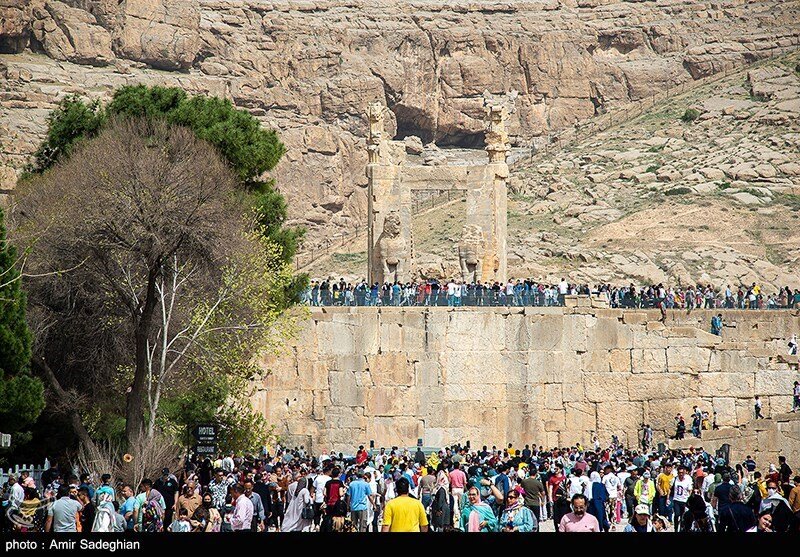Persepolis still harbors numerous mysteries, documentarist says

TEHRAN - Iranian filmmaker Pejman Mazaheripur, whose new documentary on Persepolis was screened at the Cinema Museum of Iran on Sunday evening, says the majestic UNESCO-registered site still harbors numerous unrevealed mysteries.
Addressing the attendees during the screening of his film, Mazaheripur expressed his belief that despite extensive research and numerous documentaries about Persepolis, there remain untold stories and unexplored facets waiting for researchers and filmmakers to delve into.
“This documentary is part of the Ancient Iran series, initiated in 1396 (2017) and meticulously researched and compiled until 1400 (2021),” Mazaheripur said at the start of his presentation.
“Under the supervision of Dr. Shahrokh Razmjou, the documentary underwent rigorous research phases. The initial film covered the early explorations [conducted at Persepolis] up until World War II, with the second film focusing on the significance of Ali Sami, the first Iranian archaeologist who commenced excavations at the foundation of Persepolis.”
Mazaheripur also mentioned the Italian conservation efforts that led to the identification and preservation of various artifacts, now housed in the National Museum of Iran. “The third film encompasses Razmjou's studies on specific structures within Persepolis… along with an analysis of the intricate details on the eastern side of the Apadana Palace.”
Regarding the challenges faced during the documentary's production, Mazaheripur highlighted the abundance of pre-existing films focusing on Persepolis' Achaemenid era, emphasizing the rarity of productions dedicated to archaeological and historical analysis.
"I firmly believe that Persepolis still holds undisclosed secrets, leaving ample space for researchers and filmmakers," Mazaheripur stated.
Referring to his recent documentary, Mazaheripur said: “We intended to uncover it based on in-depth research. Editing consumed most of our time due to the details stemming from our comprehensive studies.”
Reflecting on personal experiences during the documentary's production, Mazaheripur remarked on the challenge of accessing historical visual documents from various sources but expressed satisfaction with the culmination of their efforts.
Also known as Takht-e Jamshid, Persepolis ranks among the archaeological sites that have no equivalent, considering its unique architecture, urban planning, construction technology, and art.
Majestic approaches, monumental stairways, throne and reception rooms, and dependencies have made that 13-ha ensemble one of the world’s greatest archaeological sites.
Construction of its immense terrace was begun about 518 BC by Darius the Great, the Achaemenid Empire’s king. On this terrace, successive kings erected a series of architecturally stunning palatial buildings, among them the massive Apadana palace and the Throne Hall (“Hundred-Column Hall”).
The terrace is a grandiose architectural creation, with its double flight of access stairs, walls covered by sculpted friezes at various levels, monumental gateways, gigantic sculpted winged bulls, and remains of large halls.
By carefully engineering lighter roofs and using wooden lintels, the Achaemenid architects were able to use a minimal number of astonishingly slender columns to support open-area roofs. Columns were topped with elaborate capitals; typical was the double-bull capital where, resting on double volutes, the forequarters of two kneeling bulls, placed back-to-back, extended their coupled necks and their twin heads directly under the intersections of the beams of the ceiling.
Narratives say that Persepolis was burnt by Alexander the Great in 330 BC apparently as revenge against the Persians, because it seems the Persian King Xerxes had burnt the Greek City of Athens around 150 years earlier.
AFM
